The R33 concept brings true offshore racing yachts to a much smaller scale. The project takes a modern IMOCA 60 and shrinks it to 10 metres, preserving the sensation of a much larger offshore racer.
During recent years, dinghy design has been influencing larger performance yachts, rendering the project into what we might call, double reverse engineering. It is clear that the LOA places limits on the performance, seaworthiness and accommodation spaces of the yacht.
What R33 offers then, is the opportunity to experience an open 60 racing yacht for those of us who can't refer to themselves as "a god of sailing".

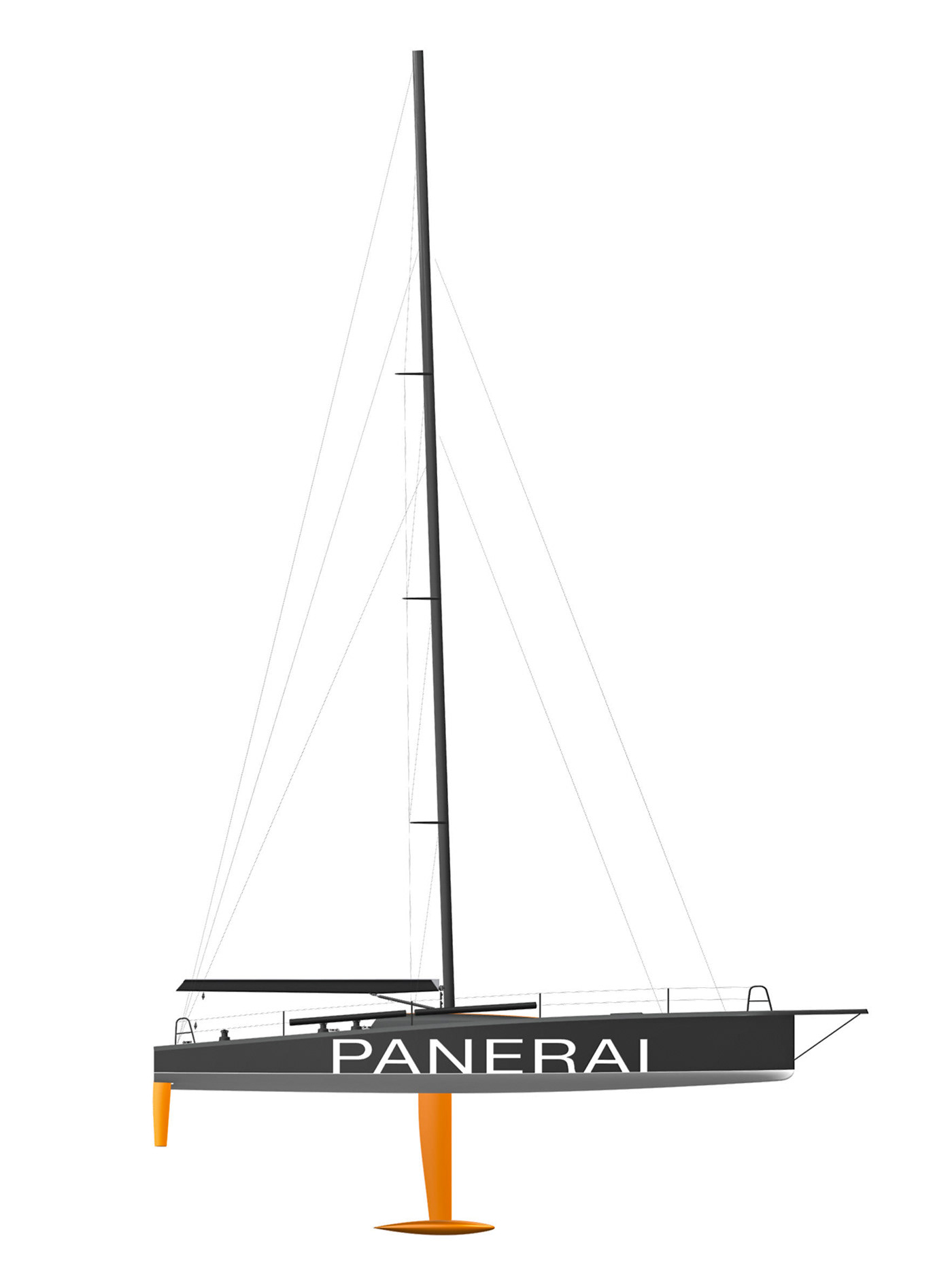
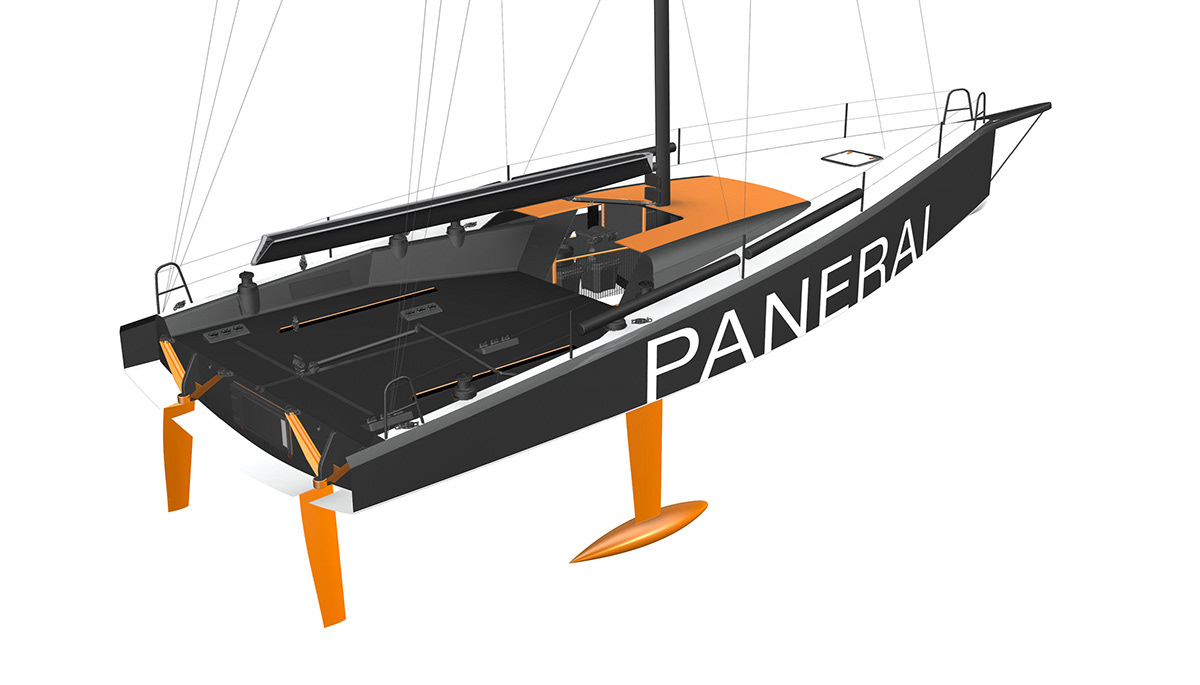
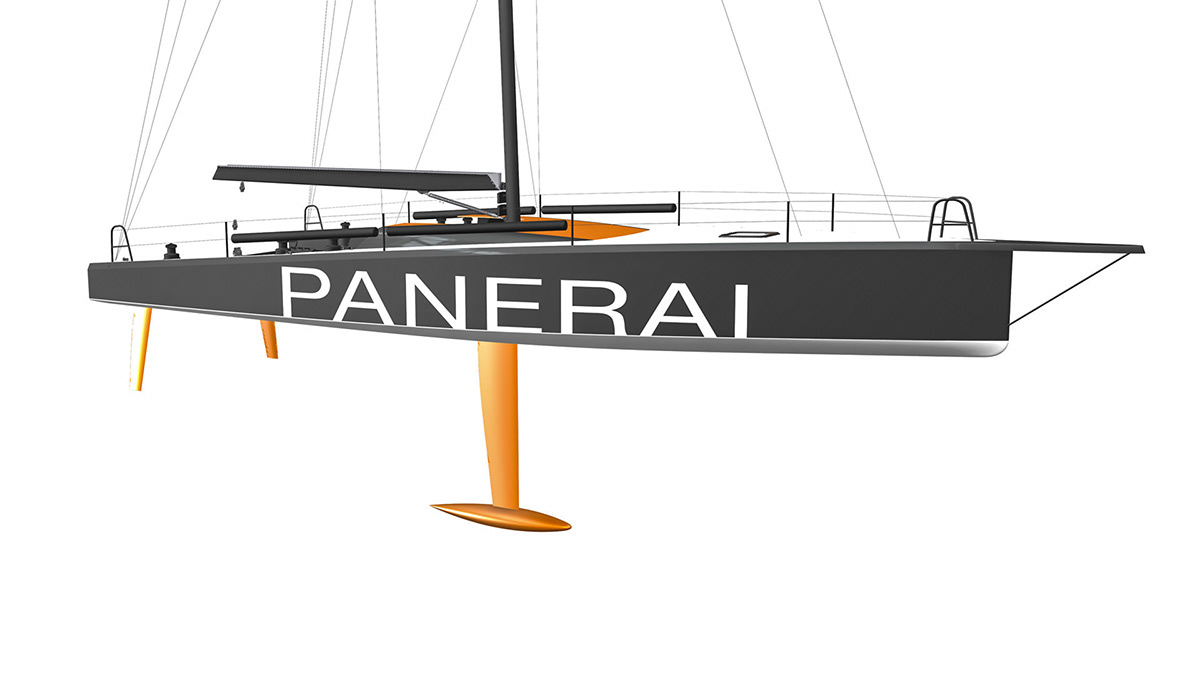

Hull
The hull development started from study of existing racing boats with LOA around 10 metres (Melges IC37, Farr 280, Clubswan 36), class 40 designs (Owen Clarke Class 40 Open), IMOCA 60 hulls (Groupama 4) and a handful of other successful racing yachts and dinghies (Comanche,Perpetual Loyal, 49er)
Finding lines plan drawings for contemporary small racing yachts is very much a wild goose chase, but the deck plans provided some insight into the hullform. The lines plan drawings by Francois Chevalier for non-foiling Open 60 and maxi yachts, turned out to be invaluable during the typeship research.
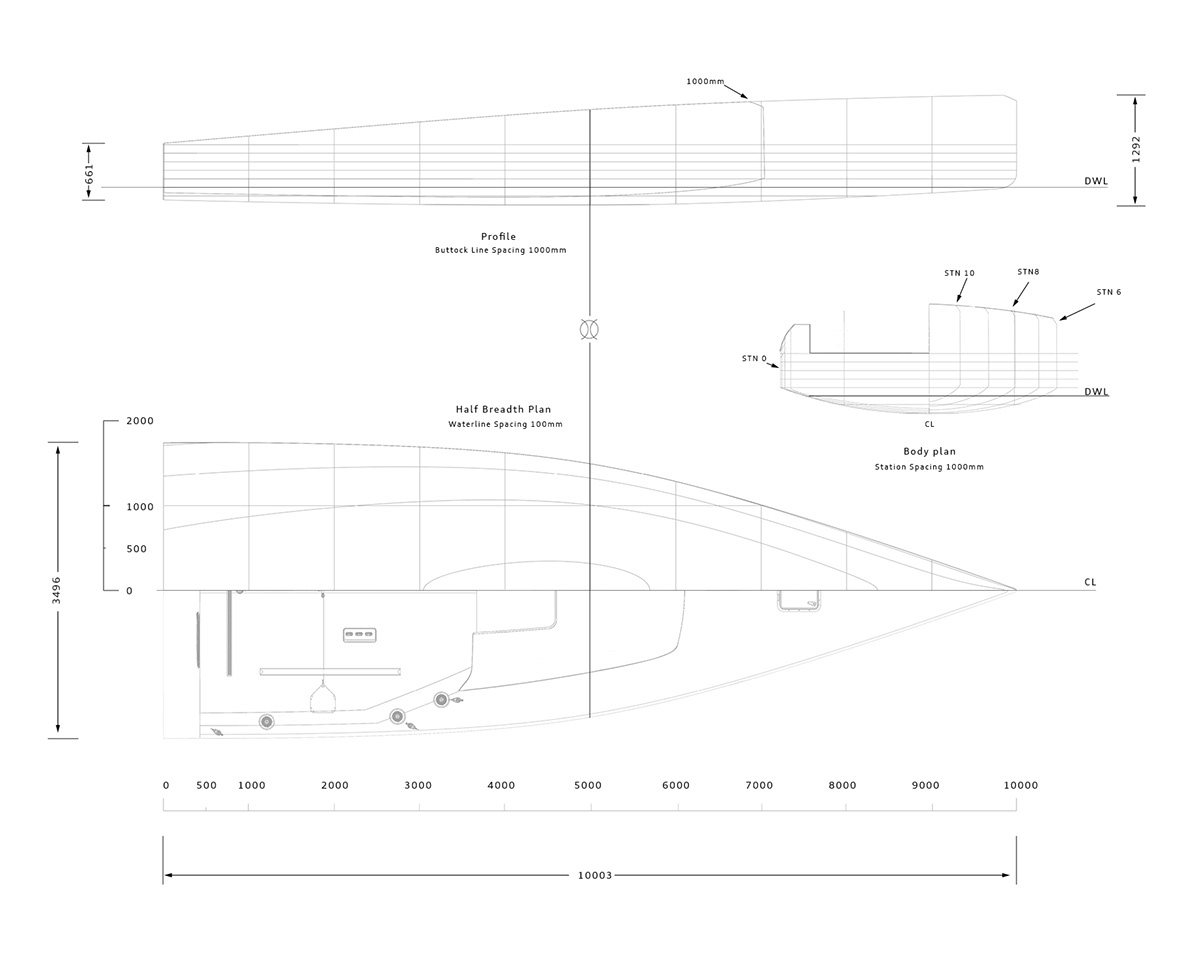
Great form stability and righting moment are achieved by large beam and flat aft section. The aft section also acts as a good planing surface, important to overcome the limitations
set by the hull speed of 7.63 kn.
Planing mode is encouraged by the accented chine. Sharp entry of the vertical stem has some wave piercing qualities, yet provides significantly more buoyancy than a true wave piercing design in order to prevent submerging in rough seaway.
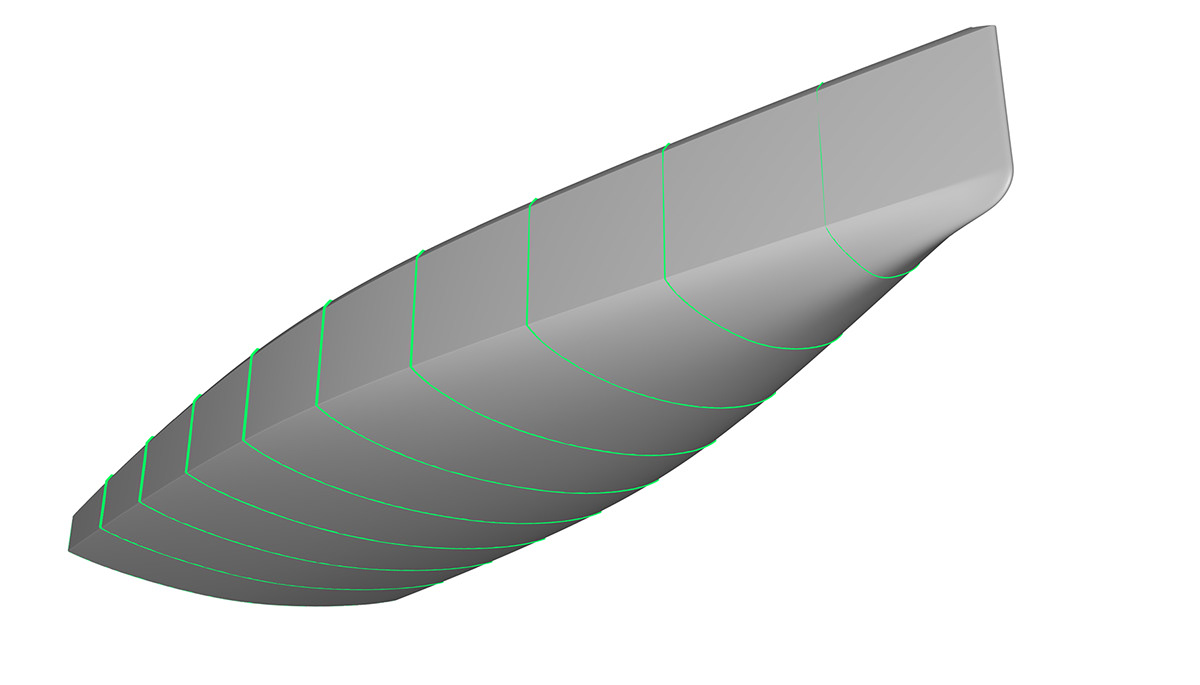
3D representation of the stations shows clearly the sharp entry bow, accented chine and the flat planing aft surface. The beamy design and absence of aft overhang places the yacht at significant disadvantage at low speeds, due to frictional and wave resistance.
As a racing inspired yacht, the design is mostly concerned with high speed performance, and the disadvantage of wave resistance starts to quickly diminish after Froude number reaches 1.2 and becomes negligible at Froude numbers beyond 1.6. It should be noted, that without access to tow-tank or computer capacity to carry out CFD analysis, the hull form is "best guess"
General Arrangement
General arrangement of the R33 was developed based on the hull form and weight requirements. A lot of attention was paid to ergonomics and overall usability of the boat.
It should be mentioned, as stated in the design concept, that the R33 draws inspiration from Open 60 offshore racing yachts. The habitability of these vessels is extremely spartan and the crew spends most of their time, steering, navigating and adjusting the sails.
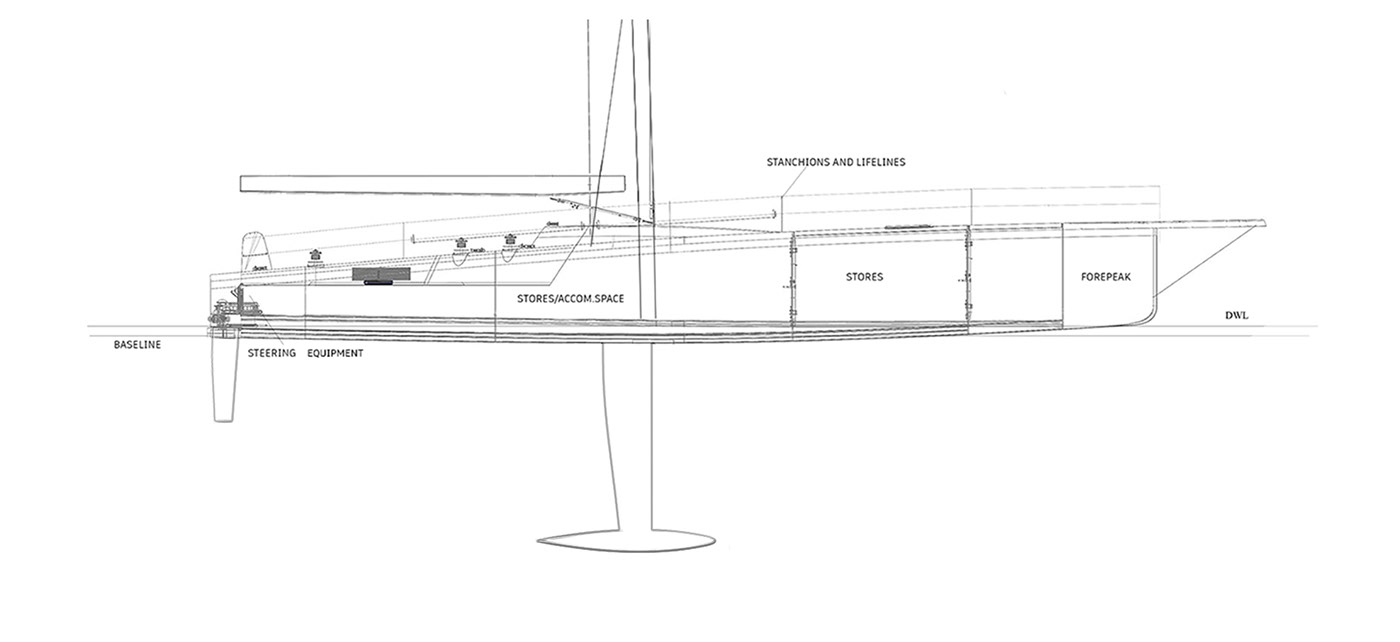
The main usage of the accommodation/navigation space is navigation, communication cooking/ eating, maintenance, and on rare occasions, sleeping. It was important that all items in the accommodation spaces can be fastened securely to prevent personnel and material damage even in the extreme case of capsizing. Arm rails and exposed hull stiffeners help movement down below at extreme heel angles.
As the R33 project aims to replicate an thoroughbred ocean racing yacht, the navigation station is one of the key components of the design. The navigation station is composed of a mirrored display of the vessels main instrument panel, communication equipment and a laptop.
The R33 has two bunks in a pullman arrangement longitudinally on the starboard side. The bunks have semi-hammock design with a tube frame. They allow resting even at extreme angles of heel and are located in a way that allows easy access to the cockpit. The lower bunk doubles as a working space for the navigator.
The galley equipment is portable and extremely lightweight. However, the equipment has straps to tie them down on dedicated surface areas. A propane burner with a pot, kettle and bowl will act as the means of heating food. Surface area is provided for preparation of basic meals. Small pantry will provide enough room for a freezer and storage of dried meals, powdered food and energy bars. A cargo net can be used to fully isolate the galley equipment from the living space
The R33 has a portable toilet, fixed in place at the centre line fore of the mast. The head has a 15 litre flush-water tank and a 12 litre waste holding tank. The net weight of the seat is 3.6kg. The design of the head ensures hygiene aboard even during longer voyages.
A sizeable deck hatch is located above the main sail storage. The hatch enables easy transport of sails to and from the storage and eliminates the need to move the sails through the watertight hatch of number 3 bulkhead and the main companionway.


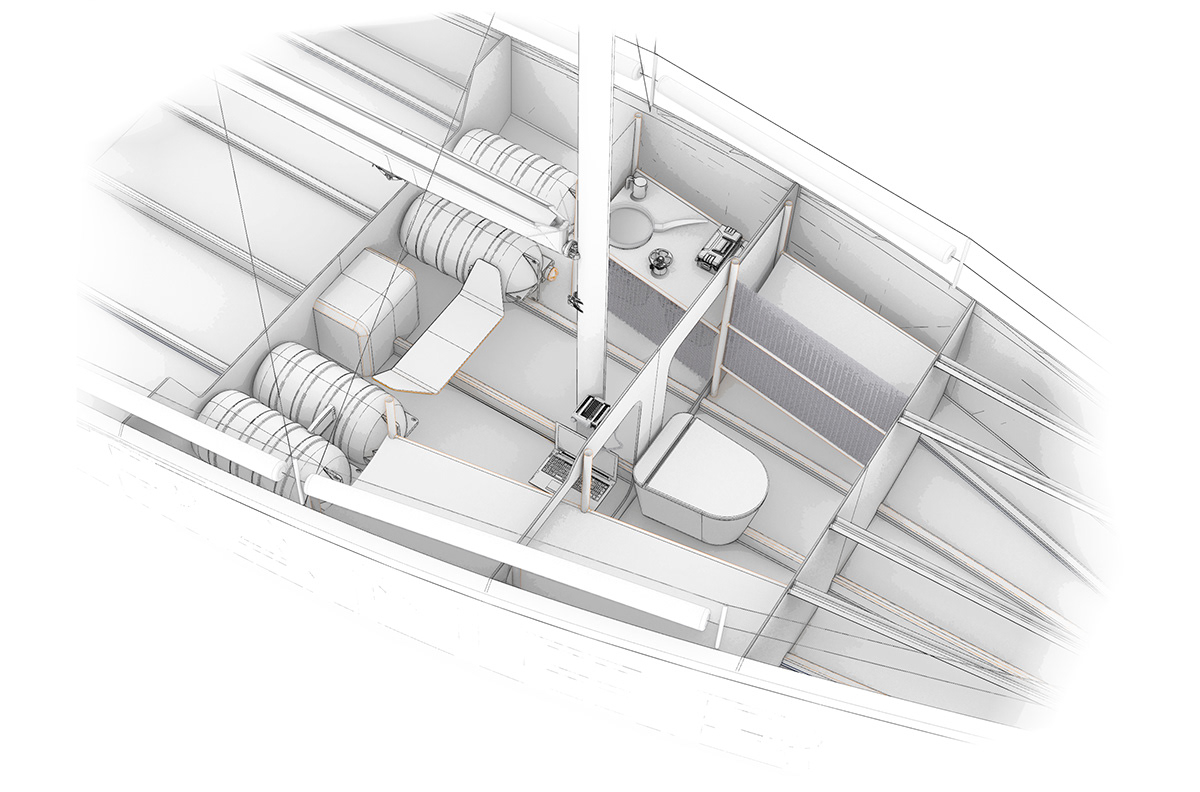
Hull Structure
The transversal structure respects the IMOCA Class Rule 2021 with five watertight bulkheads. A non-watertight structural bulkhead is located directly below the mast.
Bulkheads 2 and 3 feature a watertight hatch for storage and inspection.
Centreline (CL) and two typical (TYP) stiffeners comprise the longitudinal structure. The
stiffener separation increases in proportion to the beam.




Sail Balance
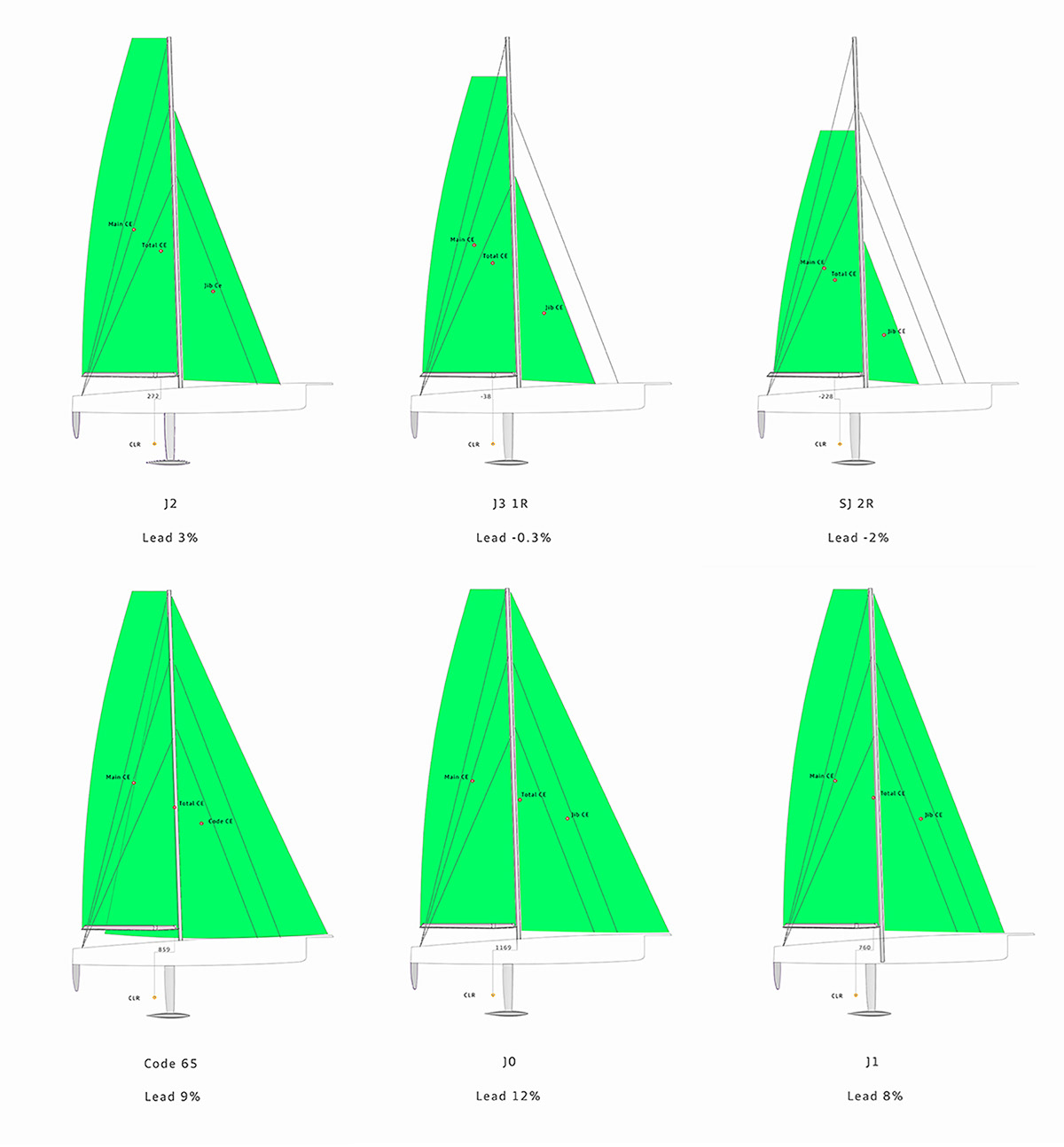
Keel
A plethora of existing data is available for foil sections. Commonly used foil section for regular yachts is 4-Series NACA foil and for performance yachts a 6-series NACA foil. A semi-laminar 6 series foil will offer the benefit of reduced drag at small angles of attack compared to a 4- series foil due to maintained laminar flow in the forward area. Selection of the keel foil section is mostly concerned with the drag coefficient. This makes the thinner 63012A series foils beneficial.
Drag coefficient (CD) versus angle of attack (Alpha) for NACA 63012A is plotted at Reynold's number 10^6 . The "laminar cup" is clearly visible, indicating that drag coefficient does not increase until Alpha reaches a critical value.
High performance vessels usually benefit from high aspect ratio appendages. A high aspect ratio foil requires a smaller angle of attack to reach a given lift coefficient, in other words, the foil is more efficient. A high aspect ratio keel fin enables the vessel to sail with smaller leeway angle when the speed is sufficiently high. The high aspect ratio also reduces the wetted surface area, and thus viscous resistance. The downside of high aspect ratio appendages is lower stall angles.




Rudder
As with the keel foil, the 63 NACA is also a satisfactory rudder section for lightweight, fast hulls, where helm angles are usually small. The rudder will operate at transition of turbulent flow with Reynolds numbers 7.74988 x 10^5 at 5 knots and 2.364786 x 10^6 at 25 knots.
The thickness of the NACA 63-015A brings the benefit of strength and reliability. The rudder foil will operate in larger angles of attack than the keel, and the increase in stall angle provided by the thicker foil is instrumental.




Lower drag coefficient could be achieved with thinner foil sections, however risk of stalling the rudder even at small angles of attack is high with thin sections. The data extracted from Airfoil Tools shows that stall will occur at around 16 degrees.
Rudder balance is important to reduce the steering effort and increase comfort for the helmsman. An unbalanced rudder will make steering either too heavy or too light, the former increasing fatigue and latter making it hard to "feel" the vessel. A good balance is achieved, when 20 percent of total rudder area is located forward of the centre of pressure. Respecting this method will place the rudder stock 58mm forward of the COP.
A rounded foil tip allows easier flow around the tip of an airfoil, which results in increased vortex shedding and thus higher induced drag. In most contemporary airfoil tips some form of sharp edge is present. The rudder features a cut-off tip to reduce vortex shedding.
Mast and Spreaders
Mast windage and mast sail interaction plays a major role in the overall aerodynamic drag
and mainsail performance of a yacht. Many state of the art racing yachts feature a rotating wing mast with outriggers. This system leads to substantial increase in performance of the vessel, due to reduced aerodynamic drag when sailing close hauled and reduced flow separation on the mainsail. However the system is rather complex and as such, prone to malfunction so traditional mast with spreaders was chosen.





3D Surfacing
The hull was modelled in Rhinoceros 3D to utilise the loft surface tool, instrumental for hull design. Surfacing was then improved in Autodesk Alias and extensively evaluated to meet class A (production) criteria



